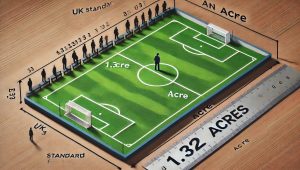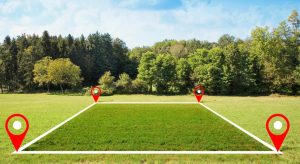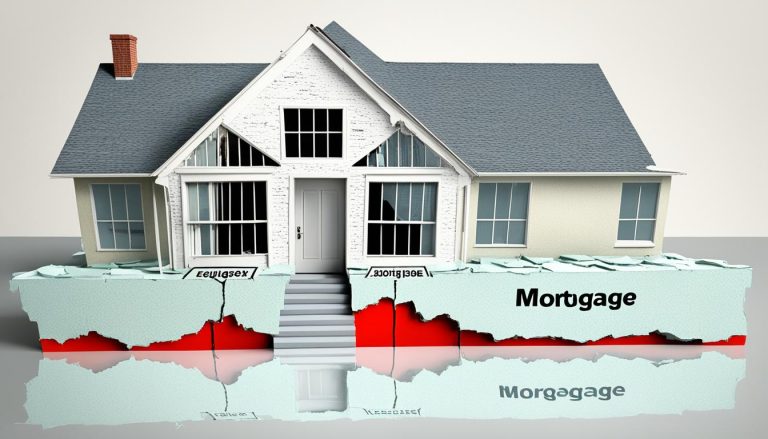Understanding how big an acre is can be challenging, especially for those who are unfamiliar with land measurements. Whether you’re buying property, managing farmland, or simply curious about land sizes, the acre is an important unit of measurement in the UK and beyond.
But how big is an acre really? This guide will break down the concept of an acre, explain its size in relatable terms, and offer comparisons to help you visualise it. By the end, you’ll have a clear understanding of how big an acre is and how it’s used in everyday contexts.
What is an Acre?

An acre is one of the oldest units of land measurement still in use today. Historically, it was defined as the area of land that a team of oxen could plough in a day, making it a deeply rooted term in agricultural communities. Today, it’s used across different fields, from farming to real estate, to define larger plots of land.
An acre is around 4,047 square meters or 43,560 square feet. This is a considerable area, and to put it into perspective, it is roughly the size of a standard football pitch, though it can vary in shape and layout.
Despite the UK’s adoption of the metric system, acres continue to be widely used in real estate and agriculture due to tradition and familiarity.
How Big is an Acre in Different Units?

To truly understand the size of an acre, it helps to break it down into more familiar units of measurement. While an acre is a commonly used term in the UK and many other countries, it can still be difficult to visualise exactly how big it is.
By converting it into square feet, square metres, and other measurements, it becomes easier to grasp its size and compare it to areas we are more familiar with.
1. Square Feet
One acre is equal to 43,560 square feet. This is the most commonly used measurement in the UK and the US when discussing land size, especially for properties and large parcels of land.
To help put this into perspective, consider the size of an average home in the UK. The average UK house has a footprint of around 600 to 700 square feet. This means that one acre could fit about 60 to 70 average-sized homes (excluding space for gardens or driveways).
2. Square Meters
In the metric system, which is widely used outside of the UK and US, one acre equals 4,047 square meters. For comparison, this is roughly the size of 16 standard tennis courts laid out side by side.
A single acre could also cover the area of about 4 Olympic-sized swimming pools. Converting to square meters can make it easier to relate the size of an acre to more familiar land areas or properties.
3. Metres
If we think about an acre in terms of its dimensions, a square acre (if perfectly shaped as a square) would be about 63.6 metres wide by 63.6 metres long. This gives us a sense of its length and width.
However, an acre doesn’t have to be square – it could take on other shapes, like a rectangle, depending on the layout of the land. A more rectangular acre might be 40 metres wide and 100 metres long, while still covering the same area.
4. Square Yards
Another common unit of measurement in the UK is the square yard. One acre covers 4,840 square yards. If you’re familiar with small garden plots or public parks, visualising the area in square yards might help make the size of an acre easier to understand.
Square yards are frequently used in discussions of smaller plots of land, so converting an acre into square yards is useful when trying to compare land sizes at a smaller scale.
Comparing an Acre to Common Landmarks

For a more practical understanding, think about an acre in terms of some common UK landmarks or spaces:
- A football pitch (in the UK) is roughly 1.32 acres in size. So, an acre would cover about three-quarters of a football pitch.
- A standard car park holds around 150 cars in a single acre.
- If you’re walking across an acre, it would take approximately two to three minutes to walk from one side to the other, depending on the shape of the land.
These conversions and comparisons help to visualise the size of an acre in different contexts, making it easier to compare with smaller or larger units.
Whether you’re discussing property, farmland, or recreational land, understanding these measurements provides valuable insight into the size of the land in question.
Visualising an Acre
It can be difficult to imagine an acre without visual aids, but comparing it to familiar spaces can help. Here are some examples that put an acre into perspective:
How Many Football Fields in an Acre?

In the UK, a standard football pitch is roughly 1.32 acres in size. This means an acre is approximately three-quarters of the size of a football field. If you were to stand on one side of a football pitch, walking across to the other side would cover slightly more than an acre in distance.
For smaller training pitches or community grounds, an acre could accommodate about one and a half pitches. This comparison makes it easier to visualise an acre in terms of large, open spaces that are familiar to most people.
How Many Football Pitches in an Acre?
If you’re more familiar with smaller football pitches, like those used for training or youth matches, you might be able to fit about 1.5 football pitches into one acre. This is particularly useful for anyone involved in sports field management or land development.
Acre vs. Hectare
The acre is not the only large land measurement used in the UK; the hectare is another popular unit, especially in agriculture and land planning. A hectare is part of the metric system and is larger than an acre.
- One hectare equals 2.471 acres, making it almost two and a half times the size of an acre.
- One hectare also measures 10,000 square metres, making it easier to work with in metric land planning.
Here’s a quick comparison of the two units:
| Unit | Size (in acres) | Size (in square metres) |
| 1 Acre | 1 Acre | 4,047 Square Metres |
| 1 Hectare | 2.471 Acres | 10,000 Square Metres |
Understanding both measurements is important, as different industries and regions may use one over the other.
How to Measure an Acre?

Measuring an acre can seem complex, especially for those who are not familiar with land measurements. However, with the right tools and methods, it becomes quite simple.
Whether you’re measuring farmland, a garden, or a property plot, there are several techniques and tools you can use to determine the size of an acre. Below, we’ll cover both traditional and modern methods of measuring land.
1. Measuring an Acre Manually
If you’re on-site and want to manually measure an acre, all you need are some basic tools:
- Measuring Tape or Distance Measuring Wheel: A measuring tape or a distance measuring wheel can help you measure the length and width of the land. A wheel is especially useful for larger plots because it rolls along the ground and tracks the distance.
- Marker Flags or Stakes: To ensure accuracy, you may want to place stakes or flags at the corners of the area you’re measuring. This can help you stay consistent and ensure you don’t overlap or miss areas.
Here’s how you can manually measure an acre:
- Step 1: Measure the Length and Width: Determine the dimensions of the land you’re measuring. Remember, one acre equals 43,560 square feet, so you will need to measure a combination of length and width that multiplies to this figure. For example, an acre can be 7 feet by 208.7 feet in a square or 100 feet by 435.6 feet for a rectangular acre.
- Step 2: Calculate the Total Area: Once you have the dimensions, multiply the length by the width to get the total square footage. If the total equals 43,560 square feet, then you have measured an acre. If the shape is irregular, you may need to break the plot into smaller sections, measure them individually, and then add the totals.
2. Using GPS and Online Mapping Tools
One of the easiest and most accurate ways to measure land today is by using GPS devices or online mapping tools. These technologies are especially useful for measuring large or irregularly shaped plots.
- GPS Devices: Handheld GPS devices or smartphone apps can measure land area based on your coordinates. You can walk the perimeter of the land, and the GPS will calculate the area for you. Some GPS apps are designed specifically for land measurement, and they’ll display the size of the plot in acres, square feet, or square meters.
- Online Mapping Tools: Tools like Google Earth, Google Maps, and other land surveying apps make it incredibly simple to measure an acre without leaving your home. With Google Maps, for instance, you can draw the boundaries of the land directly on the map, and it will calculate the area for you.
Here’s how you can do it on Google Maps:
- Open Google Maps on your computer or smartphone.
- Right-click on the map where you want to start measuring and select Measure Distance.
- Click around the perimeter of the area you want to measure, creating a shape.
- Once you’ve closed the shape, Google will display the area of the plot in square feet or meters. To convert this to acres, remember that 1 acre equals 43,560 square feet or 4,047 square meters.
3. Using Aerial Surveying and Drones
For larger plots or professional projects, aerial surveying or the use of drones is becoming increasingly popular. Drones equipped with cameras and GPS technology can survey land quickly and accurately, calculating acreage based on the images and coordinates they capture.
This method is particularly useful for uneven or hard-to-reach terrains, such as mountainous areas or densely wooded land.
While drones may require a larger investment upfront or the use of a professional service, they can provide highly detailed measurements, along with aerial images that can help visualise the land.
4. Professional Land Surveying
If accuracy is critical, hiring a professional land surveyor is often the best option. Surveyors use advanced tools like theodolites, laser rangefinders, and total stations to measure the land’s exact dimensions and area.
They can produce detailed land maps and even check legal boundaries to ensure the property lines are accurate.
Surveyors are commonly hired when:
- Buying or selling large parcels of land.
- Developing property or undergoing major landscaping projects.
- Settling boundary disputes between neighbours.
Measuring Irregularly Shaped Land

If the land you are measuring is not a simple square or rectangle, the process can be a bit more involved. Irregularly shaped plots can be broken down into smaller, easier-to-measure sections.
Once you have the measurements for each section, you can add them together to get the total area. Alternatively, using GPS tools or professional services will simplify this process, as they are specifically designed to handle odd shapes.
Converting Measurements into Acres
Once you’ve measured the land’s dimensions, you’ll need to convert your measurements into acres. Here are some helpful conversions:
- Square Feet to Acres: Divide the total number of square feet by 43,560 (since 1 acre = 43,560 square feet).
- Square Yards to Acres: Divide the total number of square yards by 4,840.
- Square Meters to Acres: Divide the total square meters by 4,047.
For example, if your land is 130,680 square feet, you can convert it to acres by dividing 130,680 by 43,560, which equals 3 acres.
Practical Uses of Acre Measurements

1. Agricultural Land
In farming, acres are used to determine the amount of land available for crops or grazing animals. The size of the land influences how much you can plant or how many livestock can be sustained.
For example, in the UK, the typical stocking rate for sheep is 6 to 8 ewes with lambs per acre. However, this number can vary based on the quality of the grass, the climate, and other factors.
If you’re managing a farm, understanding acre sizes allows you to plan your crops or livestock accordingly and ensure that your land is being used efficiently.
2. Woodlands and Residential Properties
When buying land, whether it’s for residential, commercial, or conservation purposes, knowing how many acres you’re purchasing is vital. For example, woodland plots are often sold in terms of acreage.
A woodland area of 5 acres provides enough space for both conservation efforts and recreational use, such as walking trails or wildlife habitats.
For homebuyers, acres are used to define large gardens or plots. If you’re buying a home with an acre of land, you’ll have ample space for gardens, extensions, or even small farming projects.
How Much is an Acre Worth?

The value of an acre in the UK can vary greatly depending on its location, purpose, and surrounding amenities. Here are some general pricing guidelines:
- In rural areas, especially where land is used for farming, an acre might cost between £10,000 to £15,000.
- In suburban or semi-rural areas, the cost of an acre could increase to £50,000 or more.
- In urban areas or places with high development potential, such as near cities, the price can range from £500,000 to over £1 million per acre, depending on planning permissions and proximity to infrastructure.
This wide range in pricing highlights the importance of understanding both the size and value of an acre when making land-related decisions.
Conclusion
In summary, an acre is a crucial unit of land measurement, particularly in the UK property and agricultural sectors. Whether you’re visualising an acre in terms of square metres, football fields, or its practical uses in farming, understanding its size and value is essential.
Whether you’re buying land, managing a farm, or simply curious, this guide provides the key information you need to grasp the size and significance of an acre.
FAQs About Acre Size
How long is an acre?
An acre is an area measurement, but if laid out as a square, each side would be approximately 63.6 metres long.
How many acres in one hectare?
One hectare equals 2.471 acres.
How many square meters in one acre?
One acre is equal to 4,047 square meters.
How much does an acre cost in the UK?
In rural areas, an acre typically costs between £10,000 and £15,000, while in urban areas, it can be valued at £500,000 or more.
How many square feet in an acre?
One acre contains 43,560 square feet.
How many football fields in an acre?
An acre is roughly three-quarters the size of a standard football pitch.
How many ewes and lambs per acre?
On average, 6 to 8 ewes with lambs can graze per acre in favourable conditions.






